Into the indigo blackness of the Soviet night, two men stepped out of a frame of electric light into the concrete warren of a Soviet khrushchyovka. Physicist Dr. Baruch Sterman, at the time a researcher at Bell Labs, together with his best friend Professor Ari Zivotofsky, peered back into the apartment. Their eyes traced the tired but exhilarated lines on the face of their hostess, refusenik Yehudit Napomnychka. The two were on a secret mission to bring physical aid and emotional support to the Jews trapped in the USSR. It was 1985, and the fear and hope mingled in the hearts of the Jews they met everywhere had culminated in a crescendo at that secret Passover seder in bitter Odessa.
Thinking back to that surreal time, Dr. Sterman, now famous as a co-founder of the Ptil Tekhelet Institute, recalled:
“Every person at that Passover seder, and there were about 40 or 50 people there, had given up so much to learn about their Judaism. To learn Hebrew, and to somehow or another identify with Israel and the Jewish people. Every single person there had someone, whether it was a husband, wife, brother, or father, in jail.”
As they turned to leave, Yehudit called out: “L’hitraot baaretz!” (“See you in the Land of Israel!”), and she shut the door.
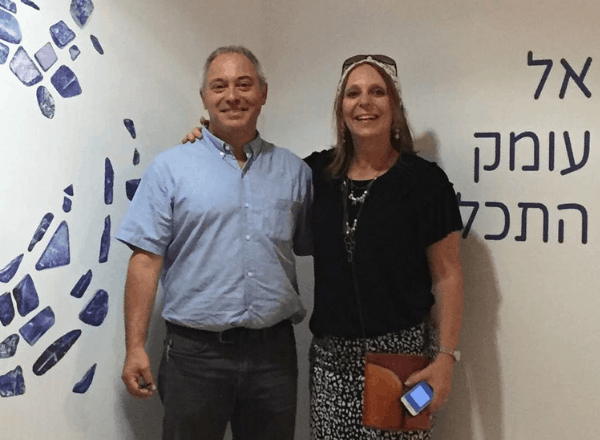
They exited into the street, and as they traced the concrete road back to their lodgings, moving from pools of brilliant light to floods of inky darkness, Baruch considered what his life had become: a comfortable job, cutting edge research in New York, happy family in New Jersey. Yet it was so far from what he had wanted it to be. The vines and olives of Judea, of Gush Etzion, called to him. He felt that pain like ice in his heart as they trudged through the Soviet night.
“You know what’s crazy,” Baruch mused to Ari, thinking back on weeks of hidden meetings, signs and countersigns, smuggled matzahs whisked away like the most precious jewels as soon as they were past customs, electric discussions blazing with fervor for the Bible and the Land of Israel.
“You know what’s crazy? They’ll be there before we are!”
Days later, Baruch returned to his American birthplace a changed man. He tendered his resignation upon arrival. Together with his wife, Judy, they moved to the community of Efrat, located in the historic Gush Etzion region, in the Judean hills south of Jerusalem.
“We moved to Israel not because we didn’t like life in America, but because we decided, when we got married, that we wanted to be part of the story of Jewish history. We felt that that story was being written in Israel and it wasn’t being written anywhere else. Whatever it was we were going to do in our lives, we wanted to do it for the larger Jewish community.”
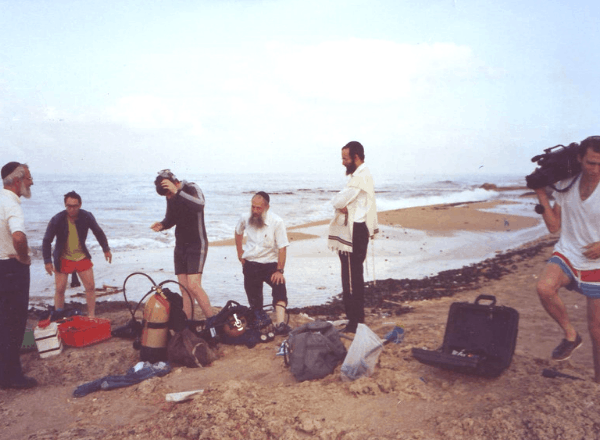
Initially, the Stermans’ mark on the pages of Jewish history were the mundane struggles of all immigrants: language, culture, etc. However, for them, that struggle was a prophetic era “flowing with milk and honey,” (Numbers 14:8) as they finally reached the pinnacle of setting up a Jewish home in Judea.
“We love the mountains, we love the air. We love our fig tree and grapes that we sit under. Since the moment we saw Efrat, we fell in love with it, and we’ve been in love with it ever since.”
Baruch enrolled in the Hebrew University for his PhD, and there, his life took a fateful twist. His good friend Joel Guberman had lost his brother in a car accident, and he wanted to do something meaningful in honor of his memory. He discovered that there was an expert, Rabbi Eliyahu Tavger, trying to revive the lost commandment of tekhelet and he tracked him down in the Bible study halls of Jerusalem.
Tekhelet is the commandment to wear a woolen string, dyed blue, at the corners of a four-cornered poncho. The vivid blue, derived from the ink of a sea creature known in Hebrew as the chilazon, reminds us of the Heavens, and our Heavenly Father. The process of making that dye was lost to history when the Jews were taken from their land – until now.
(Short video on the making of Tekhelet, produced by the Ptil Tekhelet Institute.)
[embedyt] https://www.youtube.com/watch?v=tyIaD0P8Yh0[/embedyt]
“Important is kind of an understatement. If you believe that G-d gave commandments to the world, then those commandments are the Word of G-d. And G-d says in Numbers, 15:38:
“And they shall put a thread of blue on the corners of their garments.”
To be able to renew that capability is allowing people to fulfill G-d’s word, to do G-d’s work in the world.”
In the culmination of hundreds of years of scholarly and scientific research, Rabbi Eliyahu Tavger has positively identified the Murex trunculus sea snail as the chilazon, and has rendered the ancient indigo dye from its ink sac. When Joel Guberman asked him if he could bring this commandment to life, he was answered with a sigh: “Maybe, but we need more snails, and I don’t yet know how to scuba dive.”
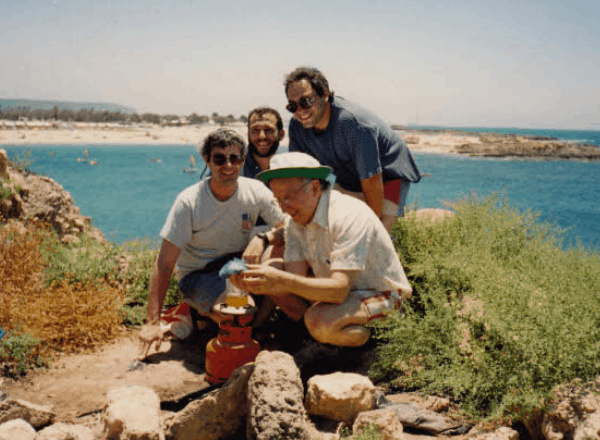
Joel called his friend Baruch, and the two enthusiastic divers left their homes at 2 a.m. for the north of Israel. Their first dive into the sea yielded 293 snails – 30 grams of dye, enough for 5 sets of corner strings, commonly called tzitzit.
Dr. Sterman recalls with awe in his voice:
“I can very clearly, with razor-sharp focus, point to the minute when my life completely changed. It was that day, on that beach. We realized at this point, that we had the ability right now to change the face of the religious world, and we decided that we were going to open up a non-profit organization, and start making tekhelet.”
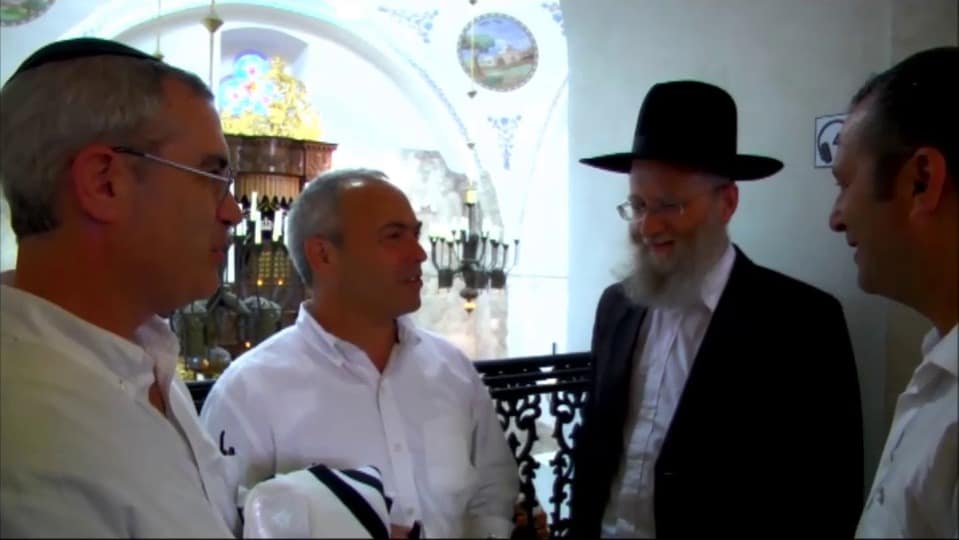
Dr. Sterman’s life, and the lives of everyone around him, had changed, irrevocably. Today, The Ptil Tekhelet Institute runs a visitor’s center in the Judean Kfar Adumim, where visitors are introduced to the intricate processes of producing and imbuing the ancient indigo dye into woolen tzitzit in accordance with Jewish law. As he describes the international journey which brought the tekhelet back to the Jewish people, Dr. Sterman makes one thing clear: the real connection to tekhelet is found right here in Israel.
“When the Jews finally came back to Israel, that’s when the tekhelet was rediscovered. And it was rediscovered by a bunch of new immigrants. The ingathering of the exiles is an absolute part of this discovery of the tekhelet. It took somebody like Rav Herzog, who came from Ireland, and us who came from New Jersey, and Rabbi Tavger who came from Russia, to all be part of the rediscovery and reestablishment of tekhelet. I don’t think it’s a coincidence. In fact, I’m quite convinced that it’s not a coincidence that the colors on the flag of Israel are the same blue and white from the Biblical commandment of tzitzit and tallit.”
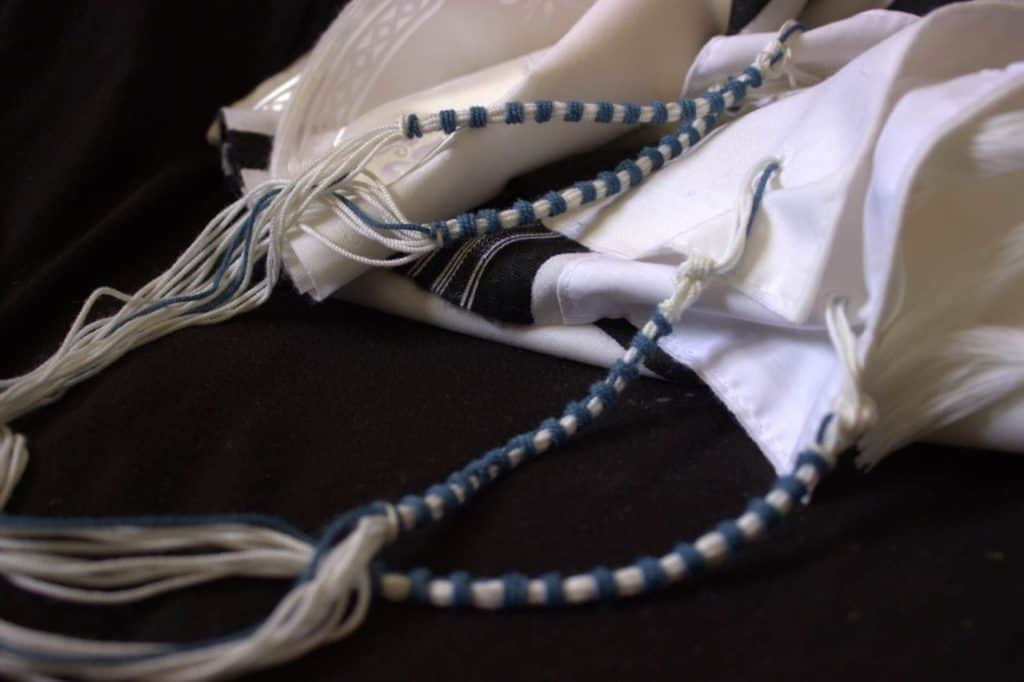
The blue on the Israeli flag represents the tekhelet. That flag is a symbol of national prayer, a prayer of two thousand years, that we may merit to return to a state of closeness to G-d, to the perfect state of His service, in His land. Already, Jews are freely returning to and rebuilding our land. Already, we are reviving our living Bible as we have never done before. Already, G-d has given us back the opportunity to fulfill one more of his commandments, tekhelet, and become even closer to Him.
“It’s a huge responsibility, and a tremendous gift, to be involved in this,” added Dr. Sterman. “These are the words of G-d and G-d is infinite, and thus all these things which come from Him are infinite, and have so much to teach us.”
Jewish tradition views the revival of tekhelet as a clear sign heralding the era of the Messiah. May this vivid symbol help spread the peace and the word of G-d across the world, as it says,
“O Zion; put on thy beautiful garments…for the LORD hath comforted His people, He hath redeemed Jerusalem.” (Isaiah 52: 1-9)
(Rachel Ben-Shetach participated in writing this article.)[/vc_column_text][/vc_column][/vc_row][/vc_column_text][/vc_column][/vc_row]




